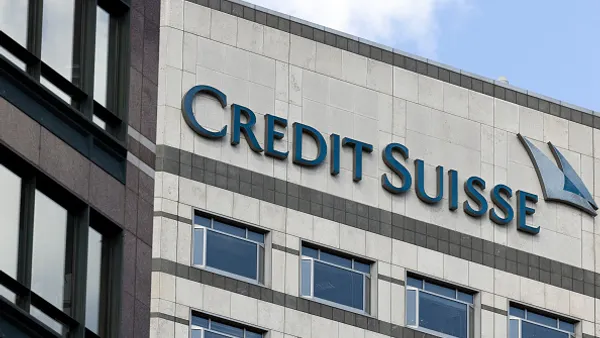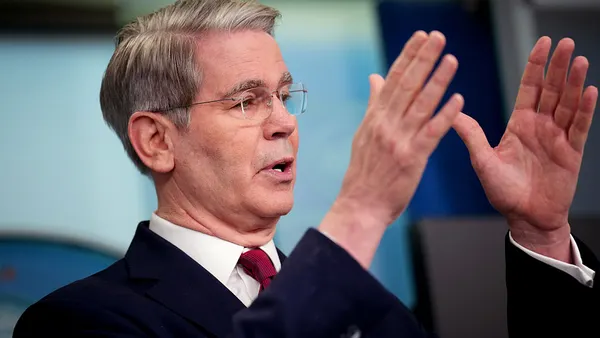Dive Brief:
-
Truist Financial on Thursday reported profit of $1.56 billion for the quarter ending June 30, a 73% increase from $902 million it reported last year at that time. The Charlotte, North Carolina-based bank’s revenue for the quarter was $5.65 billion, down 3.7% compared with the $5.87 billion it reported in Q2 2020.
-
Truist Chairman and CEO Kelly King attributed the bank’s profit increase to a reduction in loan-loss provisions and an increase in fee income, including record insurance commissions, wealth management income, card and payment-related fees and commercial real estate related income.
-
Citing an improving economic outlook and lower loan balances, the bank reported a negative $434 million in credit loss provisions in the second quarter of 2021, compared with the $844 million it added during the same period last year.
Dive Insight:
Truist, which was formed after the $28 billion combination of BB&T and SunTrust at the end of 2019, continues to execute on its merger integration strategy. The bank plans to achieve $1.6 billion in merger-related cost savings by the fourth quarter of 2022.
However, as it pushes toward that $1.6 billion target, Truist continues to incur merger-related expenses.
Merger-related and restructuring charges increased $156 million in the second quarter, primarily due to costs connected to the bank’s voluntary separation and retirement program, while incremental operating expenses related to the merger increased by $15 million, the bank reported.
The bank, which began offering the retirement program last month, said 2,000 employees have chosen to participate.
"These were totally voluntary decisions on their part," King told analysts Thursday. "This program helps us reduce costs and create capacity to invest in new services for our clients. It's really part of our overall intense focus on reconceptualizing our businesses. To thrive in today's world requires a deep commitment to continuously re-evaluating yesterday's activities and expenses associated with that, so that we can afford to invest in new activities for today's demands."
Truist said it expects to incur approximately $4 billion in merger costs through 2022.
The bank continues to consolidate branches to reduce the number of areas where BB&T and SunTrust locations overlap.
To date, the bank has closed 374 retail locations since the merger and is on track to achieve 800 closures by the first quarter of 2022. The bank expects to close 39 locations this month.
King said he is pleased with the bank’s client retention rate amid the branch closures.
"Our retention is a very strong 98-plus percent, which is really fantastic in any type of merger," he said.
Nonbranch facility space is down 3.8 million square feet as the bank closes in on a target of 4.8 million, said Daryl Bible, the bank’s CFO.
Truist reported growth in demand for its digital banking services during the quarter.
Since the second quarter of 2020, Truist said its digital user base increased to more than 4.1 million active clients — a 9% boost. Zelle transactions were up 60% compared to a year ago, Truist reported.
Ahead of physical branch conversions, Truist is beginning to roll out its new digital banking platform to customers, Truist President and COO Bill Rogers said.
"Rollout will happen in a series of waves throughout the back half of the year," Rogers told analysts. "We anticipate that up to half a million clients could be on the digital platform by the end of this month with more to be added in each successive wave."
Thursday’s second-quarter earnings call marked King’s last as Truist’s top executive. Rogers will step into the CEO role in September, a condition of the 2019 merger.
King is expected to remain chairman for six months beyond the September transition and then serve on the bank’s board.













